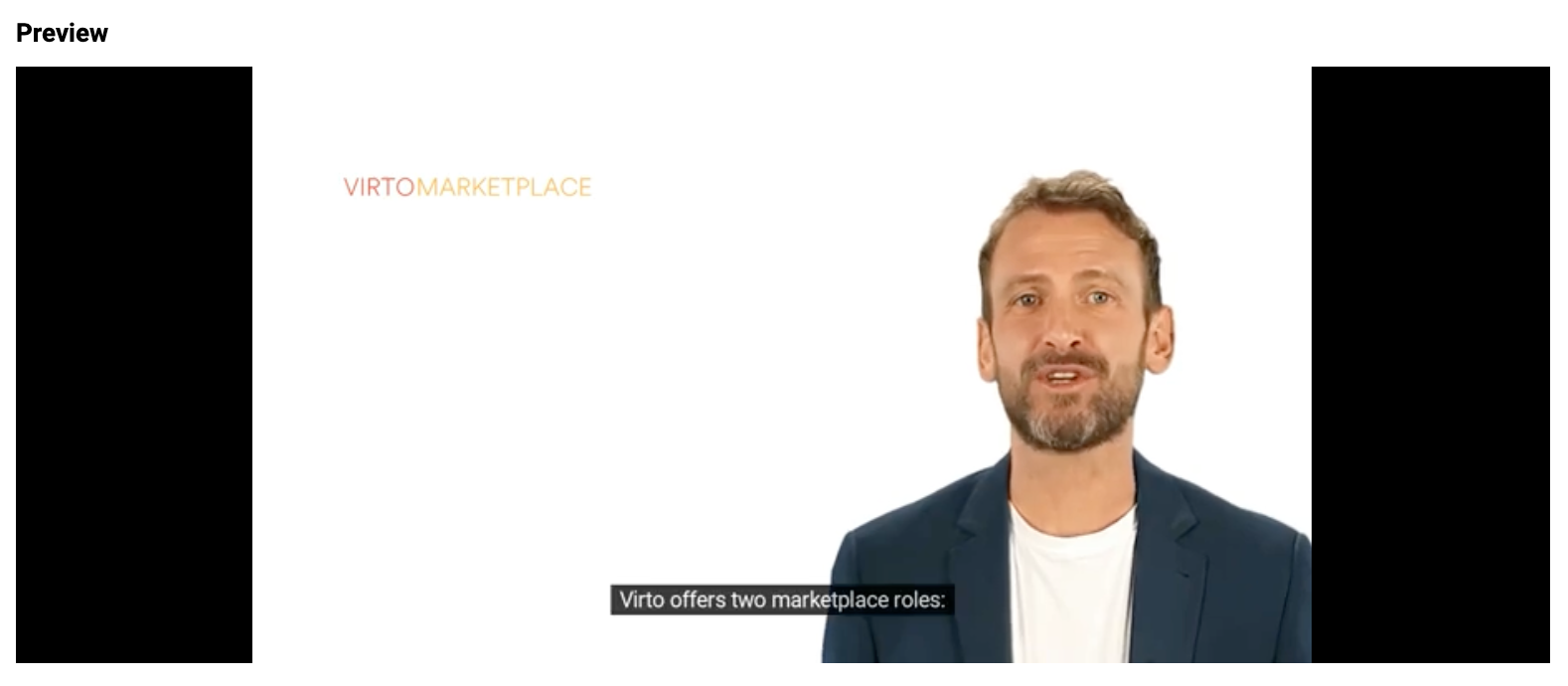Last update:
February 12, 2024
Video¶
The video component displays a YouTube video in an iframe.
Usage¶
Include the vc-video component in your Vue application, providing theming and enhanced functionality to your video inputs.

Video is created with source property.
Create a basic video as follows:
Video API¶
API empowers you to create dynamic and interactive video components to customize its appearance and behavior.
Basic Vue¶
You can easily incorporate the vc-video component into your Vue applications using simple templates.
Props¶
To customize the appearance and behavior of videos, use the following props:
| Property and Type | Description |
|---|---|
label {string} |
Label for the video. Also available interpolation {} syntax based on current element context. |
tooltip {string} |
Tooltip text for the video label. |
source {string} |
The source URL of the video. |
size {"auto"}, {"xs"}, {"s"}, {"m"}, {"l"}, {"xl"}, {"xxl"} |
Video size. Default: auto |
Dynamic Views¶
To dynamically integrate the vc-video component into your views, use the schema interface:
interface VideoSchema {
id: string;
component: "vc-video";
property: string;
label?: string;
size?: "auto" | "xs" | "s" | "m" | "l" | "xl" | "xxl";
tooltip?: string;
visibility?: {
method: string;
};
update?: {
method: string;
};
horizontalSeparator?: boolean;
}
To incorporate the status into your dynamic applications, define the following properties:
| Property and Type | Description |
|---|---|
id {string} |
The unique Id for the vc-video component. |
component {vc-video} |
Component used in schema. |
property {string} |
Property name that is used for binding video url value to blade data. Supports deep nested properties like property[1].myProperty. Additionally, you have the flexibility to bind computed property that returns a value. Computed property should be defined in the blade scope. |
label {string} |
Label for the video. Also available interpolation {} syntax based on current element context. You can specify the localization key for the label. Under the hood, vue-i18n is used. |
size {string} |
Video size. Default: auto |
tooltip {string} |
Tooltip text for the video label. You can specify the localization key for the tooltip. Under the hood, vue-i18n is used. |
visibility {{method: string}} |
Visibility state for component, could be used to hide video based on some conditions. Method or variable should be defined in the blade scope and should return a boolean value. |
update {{method: string}} |
Method to call when the video url value is updated. It gets changed value, schema property name and field internal context as arguments. Method should be defined in the blade scope. |
horizontalSeparator {boolean} |
Adds a horizontal separator line after the component. |